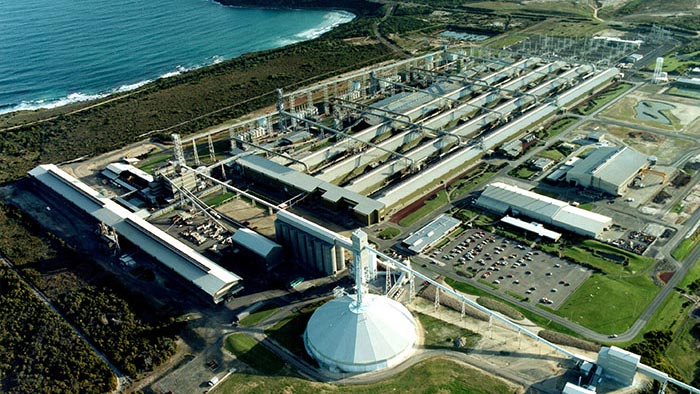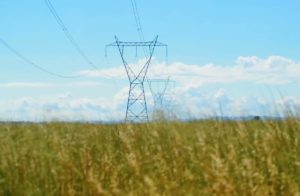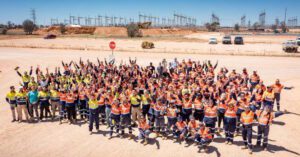A new five-year deal to subsidise electricity supplies to the huge Portland aluminium smelter will see the plant play a greater role in demand response markets, acting very much like a massive battery.
Alcoa announced on Friday that it had secured a five-year electricity supply deal for the Portland aluminium smelter, signing supply agreements with AGL, Alinta Energy and Origin Energy, alleviating fears it was on the cusp of closure.
As part of the deal, the smelter will take on a greater role as a provider of demand response services, with the federal government having already committed to paying Aloca $19.2 million a year for four years to underwrite the Portland Smelter’s participation in the Reliability and Emergency Reserve Trader (RERT) program.
Alcoa said that the Victorian government had now also ‘agreed in principle’ to match the funding provided by the federal government, which means Alcoa will get almost $160 million in support payments over the next four years to keeping the Portland Smelter open.
The smelter will play a central role in demand response measures during periods of peak demand, receiving payments to cut its energy use to reduce pressures on the wider electricity grid if there is a potential shortfall in supply.
Essentially, the smelter will be able to help soak up cheap electricity when there is a surplus of wind and solar generation while cutting consumption when during peak demand periods, playing a role akin to that of a big battery.
The Portland smelter can consume as much as 10 per cent of Victoria’s electricity, and so its contribution in demand response measures can provide a substantial benefit to the grid.
It highlights the potential for other major energy consumers, including similar smelters across Australia, to strike new energy deals that allow plants to continue operating while helping to manage pressures on the electricity system. Smelters like the Tomago Smelter in New South Wales will be looking to secure a similar deal for its energy supplies and potential contribution as a demand response provider.
Alcoa said that it was confident the new deal would allow the plant to remain commercially viable for at least the next five years, which employs around 500 people and produces around 20 per cent of Australia’s locally made aluminium.
“On behalf of the Portland Aluminium joint venture partners, I recognise everyone’s cooperation and dedication in reaching the energy agreements that help to improve the smelter’s competitiveness,” Alcoa CEO Roy Harvey said.
“We look forward to finalising the Australian and Victorian government agreements, which underscore the smelter’s importance to the economy and the vital role it plays in securing Victoria’s electricity grid.”
President of Alcoa Australia, Michael Gollschewski, said that he was relieved to have secured certainty for the smelter and its workers for the next five years.
“After a year characterised by uncertainty, we are delighted to have clarity on the smelter’s power supply,” Gollschewski said.
The deal, however, does not include a commitment to supply the smelter with renewable electricity. Alcoa noted that around 30 per cent of Victoria’s electricity supplies are provided by renewable energy sources, and this is expected to go to 50 per cent by 2030 under the state’s targets.
The agreement signed with the governments and energy retailers will almost certainty help the smelter remain commercially viable for at least the next few years, with energy market analyst and ITK principal David Leitch saying forecast lower Victorian electricity prices will also help.
“Looking at Victorian futures sitting at less than $40 per MWh, and allowing for $40 million per year of government subsidies, Portland smelter will have some of the cheapest electricity in the world for the next five years,” Leitch told RenewEconomy.
However, environmental groups labelled the deal as a missed opportunity.
“It is good news for Australian manufacturing. It is, however, a significant missed opportunity to lock in rapid deployment of renewable energy,” Friends of the Earth Campaigns co-ordinator Cam Walker said.
“Western Victoria is a power house of renewable energy and should be providing the power for the smelter, via a agreement between that would reduce electricity produced by coal as new renewables become available.”
The Victorian Greens called on the Victorian government to buyout the Portland Smelter, arguing that it would provide greater certainty for workers at the plant, as well as providing an opportunity to ensure it was renewably powered.
“Instead of these secret deals every few years, could we get a better deal if the government simply bought the smelter, put it in public hands, powered it with renewable energy, and retrofitted it with clean technology as has happened with smelters in Germany?” Victorian Greens deputy leader Ellen Sandell said.
“This way we could keep jobs in Portland long-term and create green aluminium with renewable energy right here in Victoria.”
AGL Energy, which secured a contract to supply a portion of the Portland smelter’s power needs, said that the contract included provisions for short-term demand reductions to manage overall peak demand.
“The new contract represents a mutually beneficial outcome on commercial terms, for a volume of 275 MW, and provides AGL with flexibility including rights in relation to the short-term reduction of volume at times of peak demand,” AGL said in a statement.








